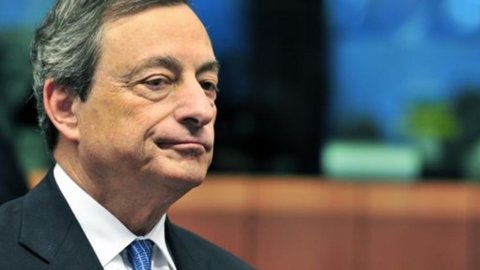"We will not let inflation stay too low for too long." This is the warning launched today by Mario Draghi, president of the European Central Bank, at the opening of the ECB Forum underway in Sintra, Portugal. “Faced with a certain misalignment between economic performance and inflation – added the number one of the Eurotower –, the response of monetary policy must be carefully considered and designed with precision. There is the risk that expectations of a continuous decline in inflation will prevail”, a phenomenon which “could lead households and businesses to postpone spending in a classic deflationary cycle”.
Even if the drop in inflation is a phenomenon common to all advanced economies, continued Draghi, two characteristic factors of the Eurozone cause a particularly low average rise in prices: “The first, common to all euro countries, is the rise in the exchange rate, which affects commodities; the second, on the other hand, is a local factor, ie the adjustment process underway in some countries, which is compressing aggregate inflation”.
The Governing Council of the ECB will meet again next week. The markets are betting on robust shock therapy: rate cuts from 0,25 to 0,15%, accompanied by negative interest on deposits in Frankfurt; launch of a new Ltro but, this time, based on the English model of Funding for Lending, to encourage the flow of liquidity to businesses; finally, within a few months, the actual Quantitative easing, also based on the purchase of ABS and other private securities on the market.
All options “are currently being discussed in the Governing Council of the ECB – Draghi confirmed today -. Any monetary policy response requires a careful assessment of the costs and benefits of the tools at our disposal. But there is no debate about our objective, which is to bring inflation back towards 2% over the medium term, in line with our mandate”.
According to Draghi, there are three nodes that “might require an answer. First of all, the joint effect of external factors, including the exchange rate, on inflation in the Eurozone”. Secondly, the effect of domestic factors, such as the difficult access to credit in some areas and sectors of the area and, thirdly, the risk that these effects together could lead to a predominant scenario of excessively low inflation.
If the performance of the exchange rate and of the money and capital markets lead to an unjustified tightening of monetary and financial conditions, "conventional instruments should be used, so as to ensure the right level of monetary accommodation desired by the Council - Draghi explained again - . At the other end of the possible responses there would be a prolonged misalignment of inflation or expectations from the baseline scenario envisaged by the ECB. In this case, we should move to an even more accommodative stance, i.e. a broad asset purchase plan.
An intermediate situation “would be one where the limits on access to bank credit interfere with the transmission of monetary policy and hinder the results of our policy – continued the president of the ECB -. This would require, on our part, targeted measures in favor of the banks, to which the ECB could provide a bridging solution".
The guaranteed term liquidity to banks, directly on the balance sheets through refinancing operations or off the balance sheet with the purchase of ABS securities in their portfolios, "could reduce those brakes on the recovery that are caused by temporary difficulties in accessing credit - he concluded Dragons –. In any case, the fundamental issue in all these options is timing: we must be careful of possible misalignments between all these trends” and the pace of the recovery, in particular as regards the increase in credit demand, the soundness of bank balance sheets and the performance of the capital markets.





